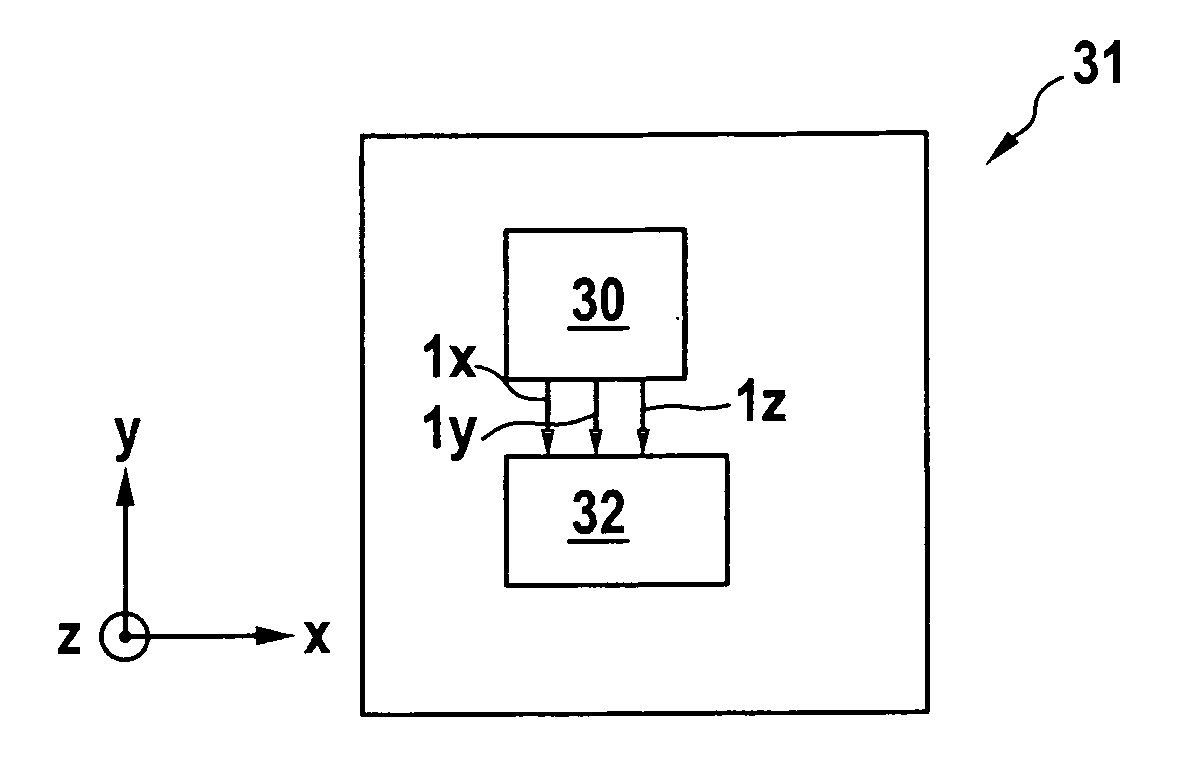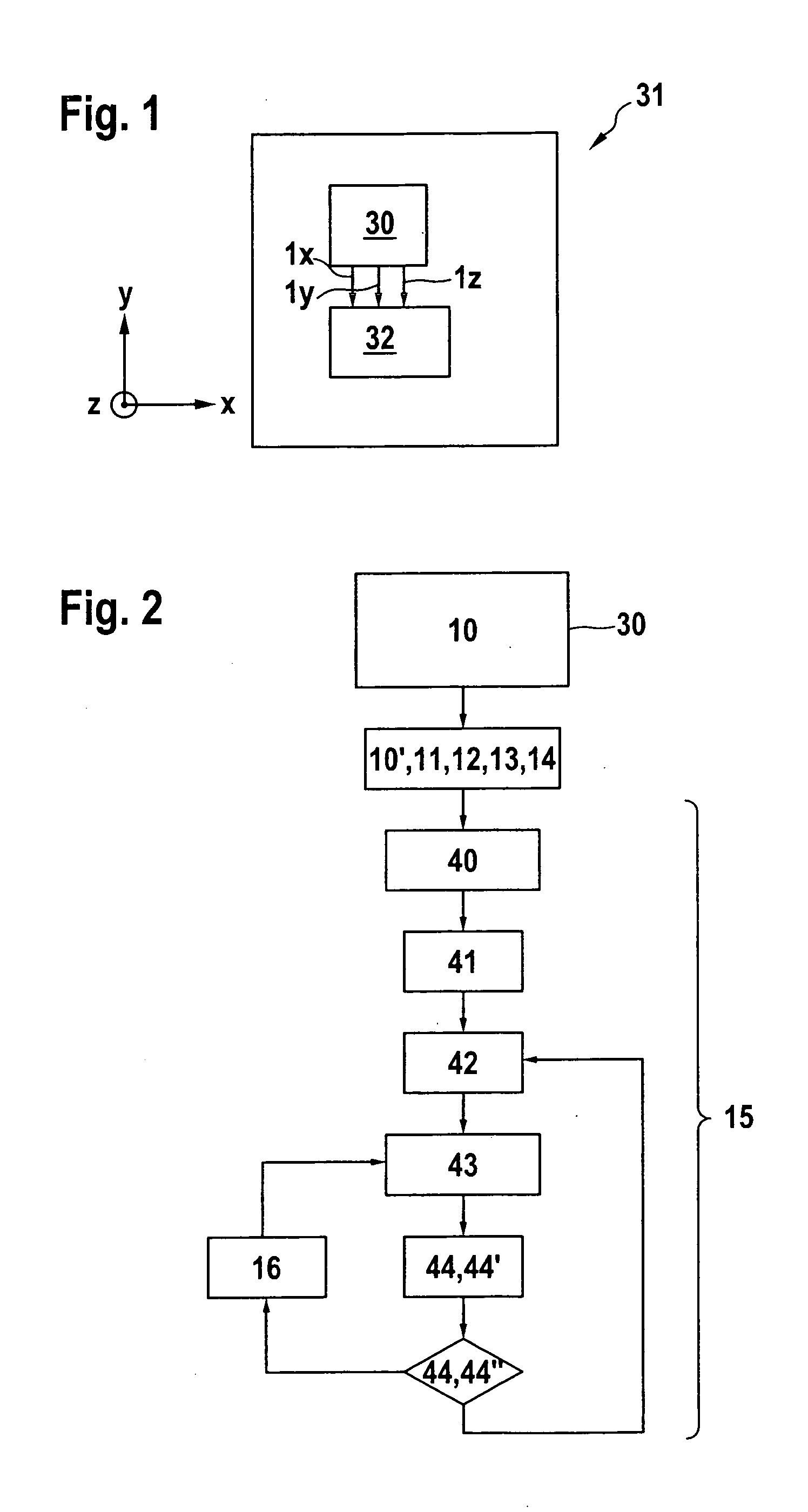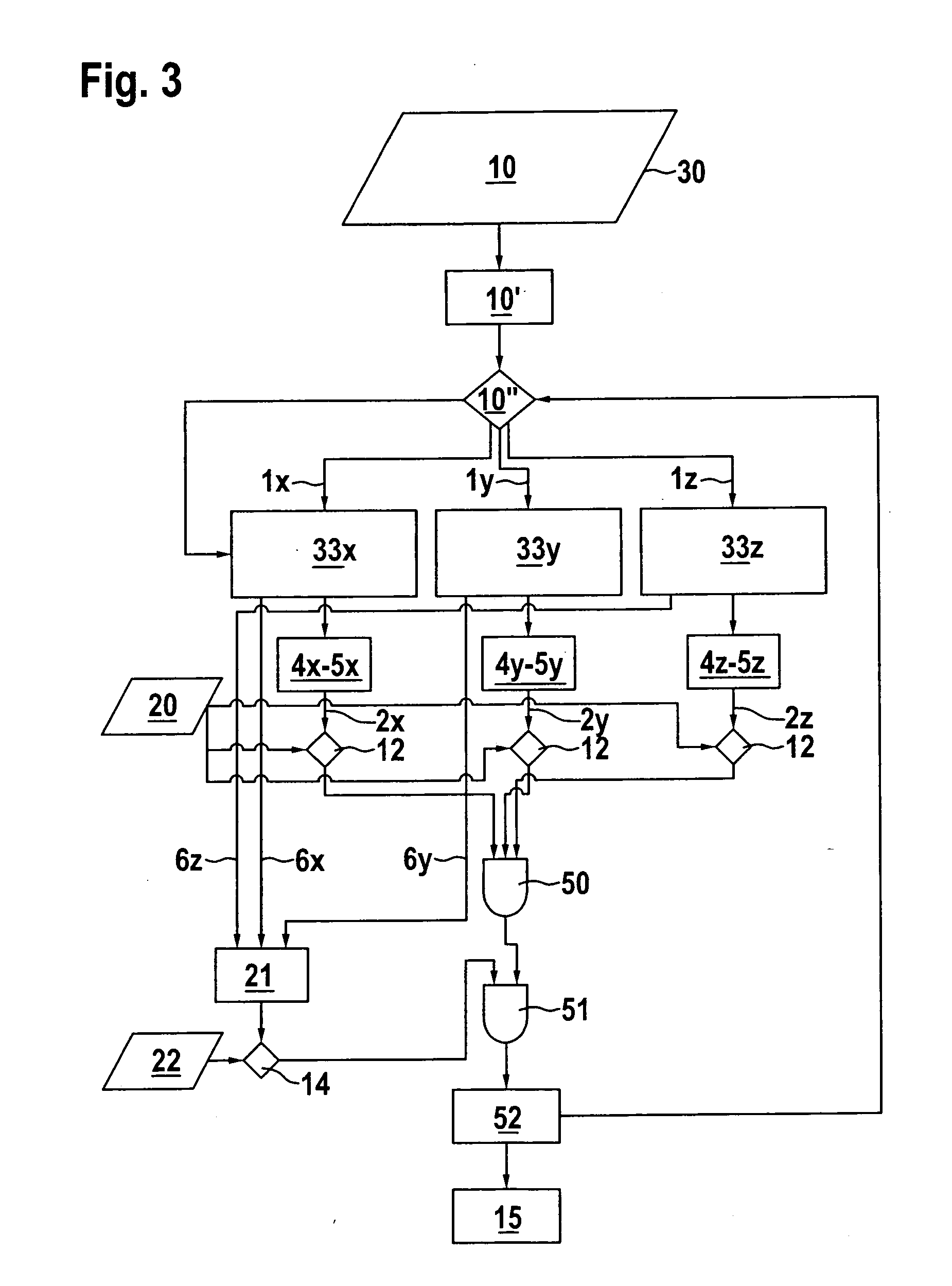Method for calibrating an acceleration sensor and electronic device
- Summary
- Abstract
- Description
- Claims
- Application Information
AI Technical Summary
Benefits of technology
Problems solved by technology
Method used
Image
Examples
Embodiment Construction
[0018]FIG. 1 shows a schematic view of an electronic device 31, which has an acceleration sensor 30, and in which a method for calibrating acceleration sensor 30 according to a first exemplary embodiment of the present invention is executed. Electronic device 31 includes, in particular, a mobile, portable device, such as a cellular phone. Electronic device 31 has the at least one acceleration sensor 30, as well as an evaluation unit 32. Acceleration sensor 30 includes a micromechanical, three-channel acceleration sensor, which is sensitive with respect to all three spatial directions X, Y, Z, i.e., measures accelerations along each of the three spatial directions X, Y, Z. The accelerations measured along each of the three spatial directions X, Y, Z are transmitted, in the form of acceleration values 1X, 1Y, 1Z and sorted according to respective spatial direction X, Y, Z, to evaluation unit 32. With the aid of these acceleration values 1X, 1Y, 1Z, evaluation unit 32 detects if electr...
PUM
 Login to View More
Login to View More Abstract
Description
Claims
Application Information
 Login to View More
Login to View More - R&D
- Intellectual Property
- Life Sciences
- Materials
- Tech Scout
- Unparalleled Data Quality
- Higher Quality Content
- 60% Fewer Hallucinations
Browse by: Latest US Patents, China's latest patents, Technical Efficacy Thesaurus, Application Domain, Technology Topic, Popular Technical Reports.
© 2025 PatSnap. All rights reserved.Legal|Privacy policy|Modern Slavery Act Transparency Statement|Sitemap|About US| Contact US: help@patsnap.com



